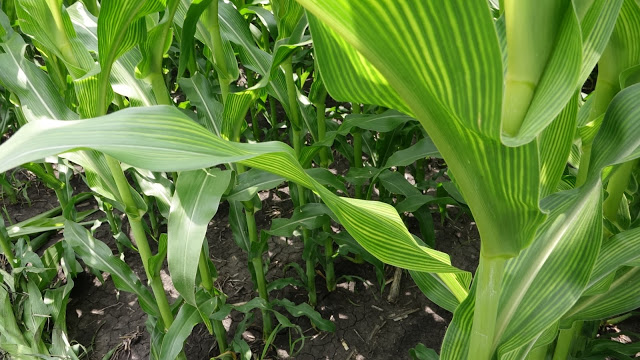February 19, 2019

By Dan Kaiser, Extension specialist
The benefits of sulfur application have been widely seen across Minnesota for the last ten years. One question that seems to persist is, what is the best option when applying sulfur in the fall? Coming back in spring with a second pass of dry fertilizer is not always an option. While the sulfate form of sulfur is mobile in the soil, there are a few things to consider when deciding which source of sulfur to choose and when to apply.
Movement of sulfate in the soil profile is not as rapid as nitrate. Sulfate, the form of sulfur available to crops, is an anion and is therefore not held in the soil. Since sulfate is subject to leaching, many seem to compare the leaching potential of sulfate to nitrate. While sulfate can move readily through the soil profile, recent research in Minnesota demonstrates that the sulfate form of sulfur can be applied in fall and benefit corn production.
Facts to consider when applying a form of sulfate in the fall
If your soil has a sandy texture or is silt loam then delaying application to the spring is advisable. Data for fall application on silt loam soils in southeastern Minnesota have been mixed, with fall sulfate achieving maximum yield potential in some years and measurable yield losses in others. Like many other factors, the success of fall sulfate depends on the weather.
If you are applying a sulfate form of sulfur in the fall, then apply near the upper end of the suggested range in case there is some movement of sulfate near the roots early in the growing season. It is possible that sulfate will move deeper in the soil profile, making a portion of the fertilizer you apply positionally unavailable early in the growing season.
Forms of sulfur differ in their availability
Due to the leaching potential of sulfate, some growers and retailers prefer to apply elemental sulfur with fall applications. While elemental sulfur presents a low risk of loss, it is not a readily available form of sulfur which crops can use.
Facts to consider when elemental sulfur is your primary sulfur fertilizer source
Elemental sulfur must be oxidized by soil microorganisms to become available. Optimal oxidation temperatures in the soil are near 90 F. Due to the high temperatures needed for oxidation, it is unlikely that much, if any, elemental sulfur applied in the fall will be available until well after the crop is planted the following growing season.
Spatial distribution of nutrients in the soil can be a problem with high analysis fertilizer applied at a low application rate. Consider the product Tiger 90, which is 90 percent sulfur, compared to ammonium sulfate, which contains 24 percent sulfur. To get the same rate of sulfur, roughly four times the material is required when using ammonium sulfate compared to elemental sulfur. The higher application rate of ammonium sulfate ensures better distribution of sulfur across the landscape. Thus, a better spatial distribution of sulfur across the landscape may require higher application rates of elemental sulfur, which may offset the cost difference of elemental sulfur versus ammonium sulfate.
Co-granulated fertilizer sources such as Microessentials offset the distribution issue by including small amounts of sulfate and elemental sulfur in each granule. However, they may still present availability issues if the amount of sulfate applied is not adequate and if the elemental sulfur is not oxidized by the time the crop needs it.
Source: University of Minnesota Extension, which is solely responsible for the information provided and is wholly owned by the source. Informa Business Media and all its subsidiaries are not responsible for any of the content contained in this information asset.
You May Also Like




